Hiro and I are leaving next week for a sixteen-night trip to Japan. We found relatively inexpensive tickets on Hawaiian Airlines last December, and will transit through Honolulu on the way there and on the way home. There will be three nights in Tōkyō’s Asakusa neighborhood, staying within spitting distance of Sensōji, the temple where our first date began, ten nights in the city of Uji, just south of Kyōto, and then three nights in Tōkyō’s Ryōgoku neighborhood.
There are plans to meet with friends. There are trips to shrines, temples, and museums (in Ōsaka, Kyōto, and Nara). And we will rent a car in Uji to scout out potential neighborhoods in Shiga, Kyōto, and Nara Prefectures to which we’d like to retire (in 2031?).

Rather than talk about our itinerary, however, I want to talk about my husband.
I could extrapolate and conclude that all Japanese are a certain way because my husband is a certain way, but that would be bad science. Instead, I’ll describe some things about him, things that, sometimes counterintuitively (for me), keep me happily at his side.
From the early days of our relationship, he was not someone to verbally express love.
There are many ways to say “I love you” in Japanese, and it took me a few months to figure out which of those expressions resonated most with him—and it took me thirty years to say arigatō (thank you) instead of any version of “I love you.”
But he has never been the say-it-back kind of person. He saves his “Momo-chan, daisuki” (I love you, little Momo—my nickname) for moments of planned impact, and hardly ever repeats it when I use daisuki or even arigatō.
But that doesn’t bother me.
He’s a hugger. We both insist on embracing whenever we’re standing in close proximity.
He’s a hand-holder. He was so stealthy when we rode cabs together in Tōkyō back in the ‘90s, covering our laps with a coat or a scarf.
He’s a laugher. Every day, we both find ways, puns or memes or just our crazy twists on Japanese or English, to make each other laugh.
And he’s a romantic. Big time.
When we booked our hotel in Asakusa, the first thing he said was that we had to have dinner at Sansada, a tempura restaurant that sits less than fifty feet from Kaminarimon, the entrance to Sensōji. Sansada opened its doors for business in 1837, but it’s not the overall history that interests Hiro; it’s our personal history.
Our first date in 1993 ended at Sansada.
The date began at Kaminarimon, a location we also return to during every trip to Japan.
The date’s original objective was a group outing to a nearby festival. Hiro was the only one (thankfully) of the ten people who expressed interest in the outing to show up. On our way to the festival, the grounds behind Sensōji were also festival-ready, with food carts galore. I hadn’t eaten that afternoon, so I suggested we grab a snack. Roasted ears of corn doused with butter and soy sauce. Steamed Hokkaidō potatoes, also awash with butter. (I was not lactose–intolerant when I was 27.)
I know I tell this story a lot, but I also believe that each couple’s origin story is worthy of repeating (which is why I often ask my friends to share their first–date stories). The crowds at the festival that day in November were intense. And although I stand at least a head above most people in Japan, Hiro reached out his gloved hand to take hold of the hem of my jacket. “I don’t want to lose you,” he said.
This, gentle readers, is when I fell in love. I was certainly smitten when he first introduced himself. Tall and handsome, his eyes gleamed with mischief and laughter. But during the year leading up to that date, my heart had been bounced around like a pinball. I had thrown a mooch pretending to be in love with me out of my apartment. I dated three men (for periods of between three weeks and two months each) only to realize we worked great as friends but not so great as lovers. And I had to understand that my purely horizontal dates were merely one–night stands, despite my tendency to fall (in lust, at least) with nearly each of them.
I already knew Hiro had a great personality. We had been chatting via modem and telephone for many months before that November serendipity. And at the start of the date, his attractiveness pinged on my heart’s (or perhaps another organ’s) radar. But when he said, “I don’t want to lose you,” my friends, I was swept away.
As the date neared its end, I flailed, looking for ways to extend our time together. When we returned to Kaminarimon, I looked up and saw the sign for Sansada. “Do you want to get some dinner?” I asked Hiro.
Never mind that we had snacked roughly ninety minutes before that. Never mind that Hiro had eaten dinner before coming out to meet me (a fact he withheld from me until some point in 2020). He agreed, and we spent another hour talking over freshly cooked tempura. And I can’t wait to sit down in Sansada once more.
Hiro’s romanticism surfaced again during our trip planning. Our time in Uji will be split between tourism things with friends and scouting out neighborhoods for our possible retirement home, but there was one locale that Hiro asked me to include.
Before that first date, whenever Hiro and I chatted, I asked him repeatedly if he wanted to get together. For reasons I only learned about later—he mistakenly thought I was seeing someone else—he always demurred. Frustrated, I used the excuse of a business trip to Kōbe to visit Ikuta Shrine, home to a Shintō goddess, Wakahirume, known for hearing the prayers of the lovelorn.
I bought an amulet there and kept it on my person until that first date. Wakahirume came through for me, big time, and roughly six weeks into my relationship with Hiro, I gave him that amulet (and he’s kept it ever since). Whenever we return to Japan, we’ve visited Ikuta as well.
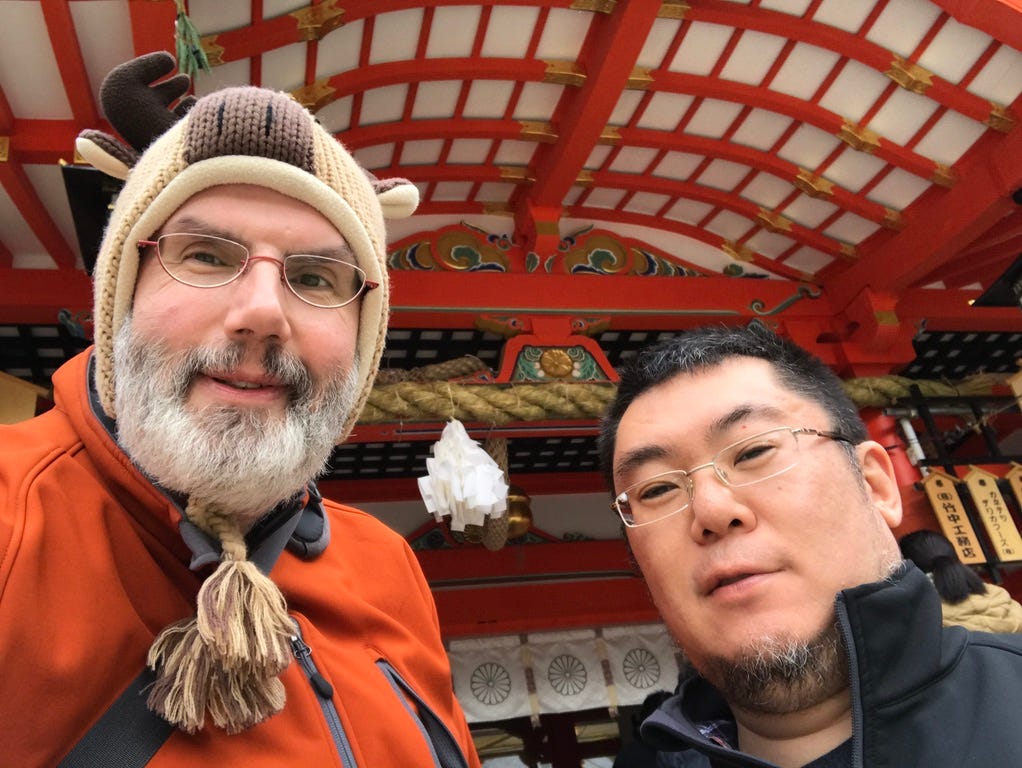

But I wasn’t sure how we’d finagle a visit to Kōbe this year. Leave it to Hiro to find a solution, reminding me how important our relationship is to him in the process. Our flight from Tōkyō on May 13th touches down in Ōsaka’s Itami Airport at 1:35 PM. From there, we’ll board an airport shuttle that drops us off in Kōbe’s downtown core, Sannomiya. Ikuta Shrine is minutes away from there.
After our prayers—I always thank Wakahirume for her continued protection—we will buy new amulets and receive new goshūin stamps in our goshūinchō stamp books. And then we take the subway to the bullet train station, ride to Kyōto, and transfer to a local train to Uji, where our hotel awaits.
The planning and lead-up to travel (although not the actual time spent away) make me anxious. I create lists and itineraries, prioritize, and worry whether friends we won’t have enough time to see will be disappointed.
Each day in the lead-up, however, includes multiple non-verbal reminders of my husband’s love—his hugs, his laughter, his travel priorities.
I hope my readers will understand that the next issue of Out of Japan will arrive in your inboxes after my return home on May 26th. Souvenirs, called omiyage in Japanese, are a big part of travel, and I promise to have plenty of omiyage banashi, souvenir stories.


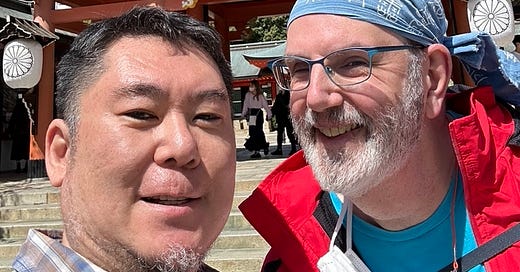


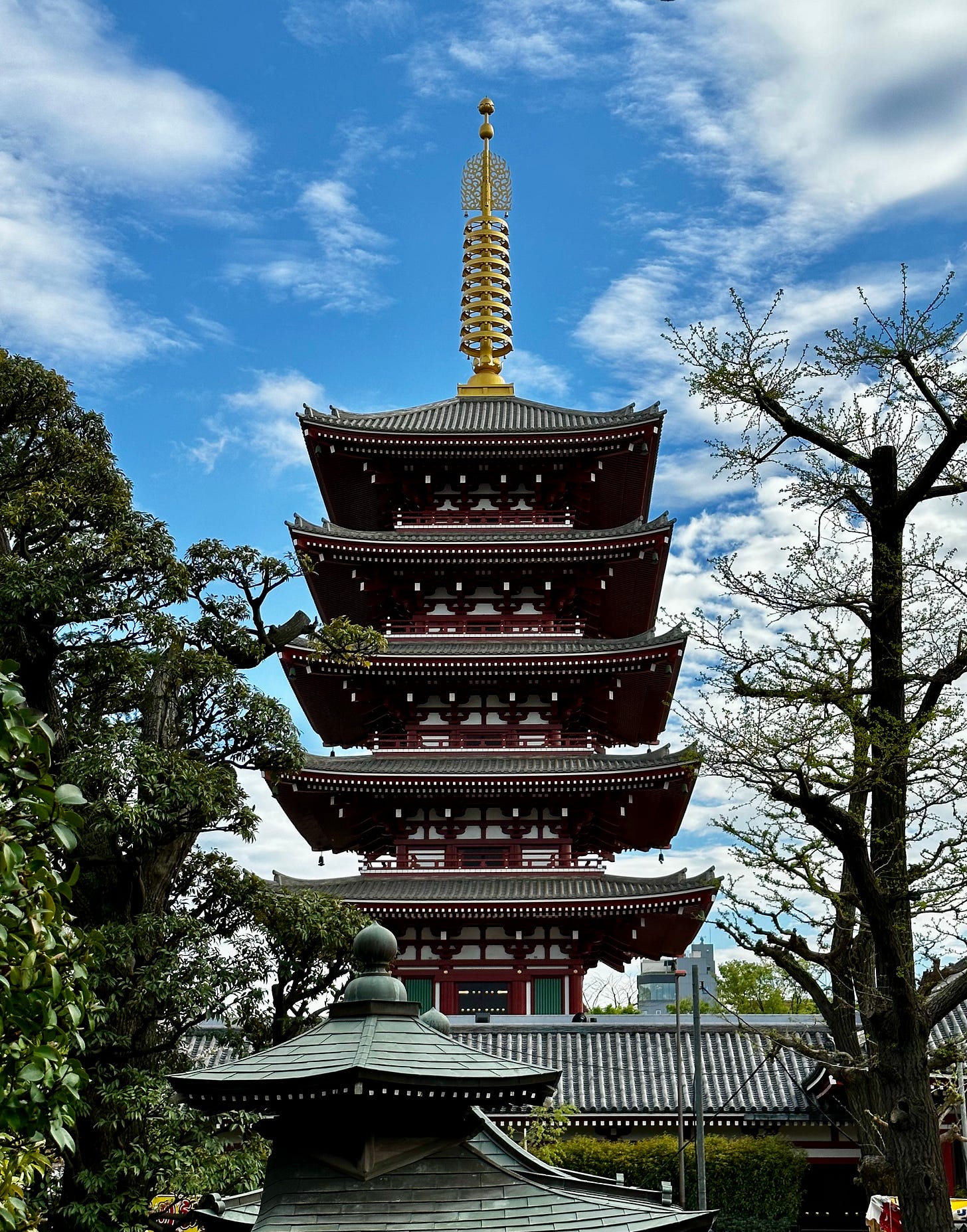
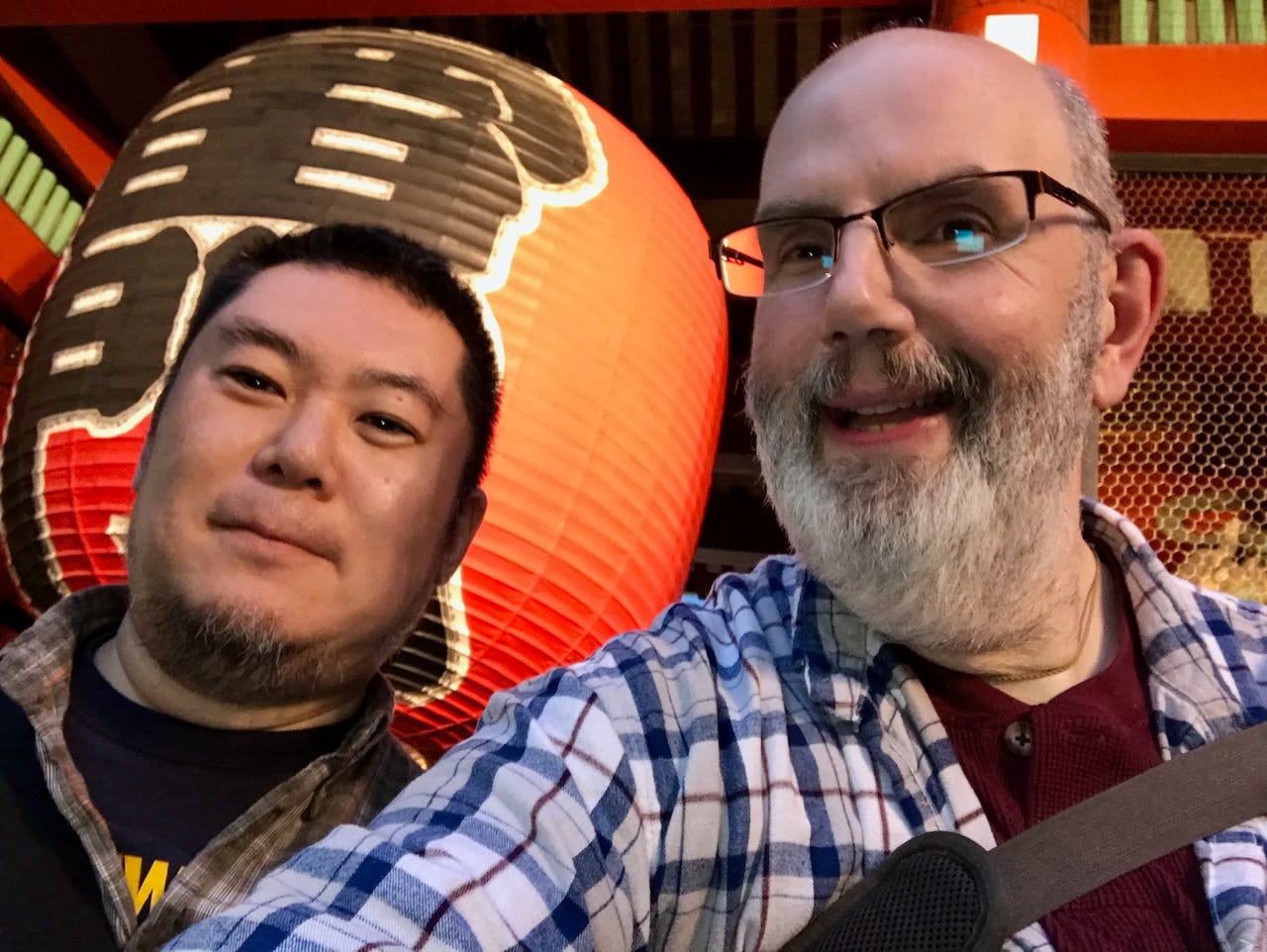
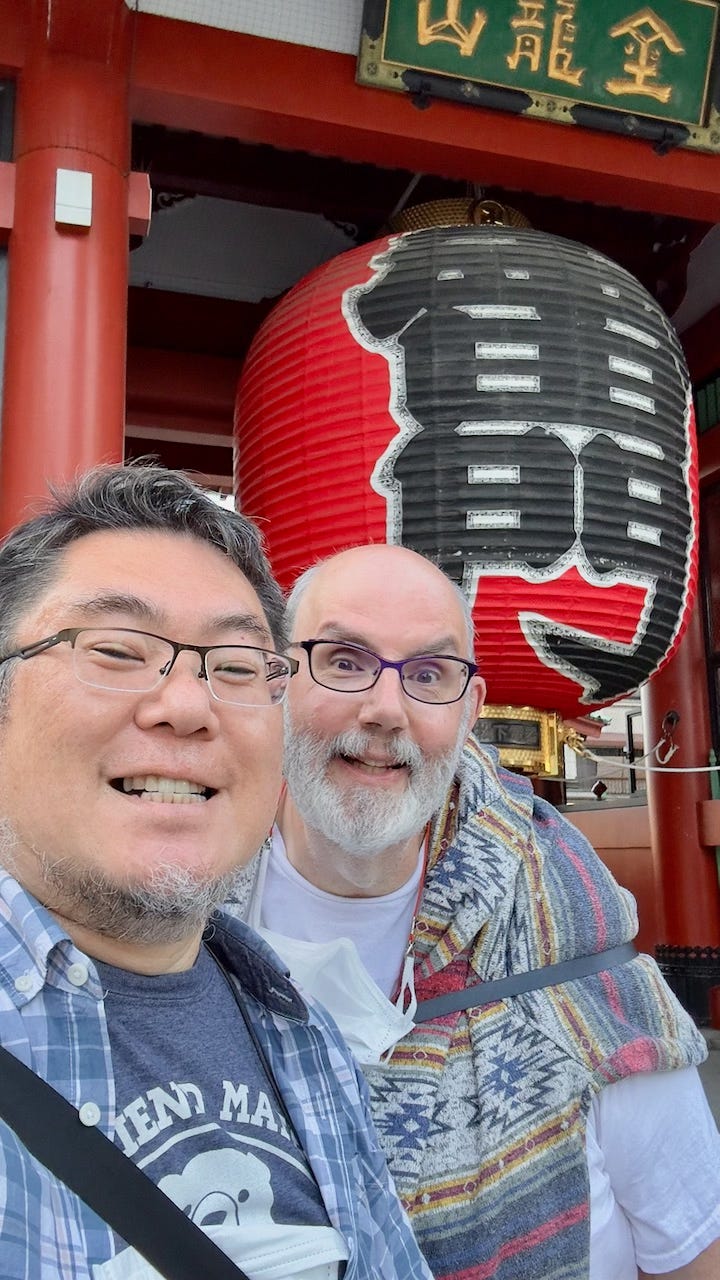

Enjoy your trip!
Love your love story, your writings and your adventures! You guys give me hope in the world. Have a great time. (ps Brian, I'm taking a writing workshop on Saturday... you inspire!) Cheers, Sue